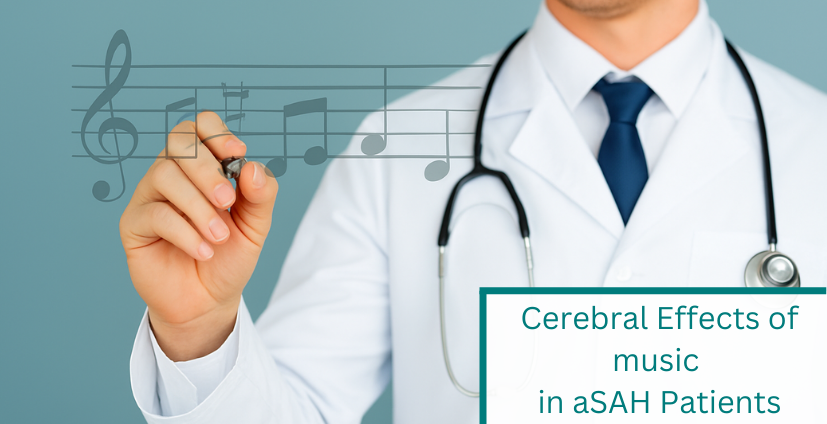
10 Sep. 2025 Cerebral Effects of music in aSAH Patients
Mozart’s impact on MCA Flow: Insights from TCD
Introduction
Can music change cerebral blood flow? In patients recovering from aneurysmal subarachnoid hemorrhage (aSAH), auditory stimulation might influence cerebral hemodynamics. A recent pilot study explored whether listening to Mozart’s music could affect middle cerebral artery (MCA) flow velocity, using transcranial Doppler (TCD) as the monitoring tool.
Study Overview
The study, published in IBRO Neuroscience (2025 ), investigated 20 patients after aSAH. Participants underwent approx. 25 minutes of auditory stimulation with Mozart’s Symphony No 40 in g minor (KV 550). Continuous right MCA TCD recordings were performed during the intervention.
Key Findings
In this pilot study, TCD detected distinct hemodynamic shifts during Mozart stimulation after aSAH. The observed reduction in MCA mean flow velocity, without relevant changes in most systemic parameters and no clinically relevant ICP changes despite some statistical subgroup differences, suggests an influence on cerebrovascular tone rather than systemic perfusion. The accompanying decrease in heart rate supports a possible parasympathetic or calming effect. These targeted, non-invasive measurements highlight TCD’s value in capturing subtle cerebral responses to sensory interventions—changes that might otherwise go unnoticed.
TCD Detection of Hemodynamic Shifts
TCD provided a non-invasive, real-time method to quantify cerebral hemodynamic changes in response to a simple sensory intervention. In the context of aSAH, where vasospasm and impaired autoregulation are major concerns, detecting subtle MFV changes could help explore non-pharmacological supportive therapies.
Auditory stimulation was associated with a significant decrease in MCA flow velocity of 0.3 % per minute (p < 0.001), suggesting reduced cerebral metabolic demand or improved cerebrovascular tone.
This effect was accompanied by a slight decrease in heart rate (p = 0.043), pointing toward a central calming or parasympathetic response. ICP showed no clinically relevant changes despite some statistically significant subgroup effects.
Conclusion
While limited by its small sample size, this pilot study demonstrates that TCD can sensitively track cerebral blood flow velocity changes induced by auditory stimulation with classical music. In aSAH patients, such real-time monitoring could support future studies aiming to identify supportive therapies that optimize cerebrovascular conditions. Larger studies are needed to confirm these findings and explore the clinical implications of integrating classical music exposure into neurocritical care.
Eden, N., Mader, M. M.-D., Bremer, J., Sauvigny, J., Grensemann, J., Fischer, M., Schweingruber, N., Gempt, J., & Czorlich, P. (2025). Mozart for the brain – a pilot study on physiological effects of auditive stimulation in patients after aneurysmal subarachnoid hemorrhage. IBRO Neuroscience Reports, 19, 198–204. https://doi.org/10.1016/j.ibneur.2025.06.008
